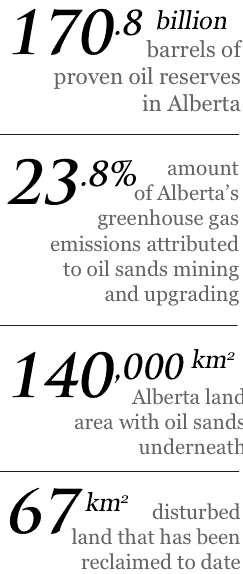
University of Saskatchewan professor Lee Barbour has been granted a five-year Industrial Research Chair through the Natural Sciences and Engineering Research Council of Canada to study water flow in reclaimed oil sands mines.
The IRC program is a partnership between academics and industry; in Barbour’s case, oil giant Syncrude will provide half the funding for the $2.6-million project, and NSERC will put up the other half.
Barbour, a civil and geological engineer with more than a decade of experience in oilsands research, will head a team of six masters students, two PhD candidates, two summer undergraduates and two post-doctoral fellows.
The official title of the research chair, which Barbour admits “can be a bit obtuse,” is Hydrogeological Characterization of Oilsands Mine Closure Landforms. He and his team will examine water flow through reclaimed and soon-to-be reclaimed land masses on mine sites in the hope of developing tools to predict water flow and contamination levels.
 When excavation of a mine site begins, the soil and up to 80 metres of other ground layers, such as clay shale, are scraped off and heaped in large piles and hills nearby. The sand left over after the bitumen and oil have been extracted is also often dumped on these hills, leaving masses of land that can contain unsafe chemicals in danger of leeching into groundwater.
When excavation of a mine site begins, the soil and up to 80 metres of other ground layers, such as clay shale, are scraped off and heaped in large piles and hills nearby. The sand left over after the bitumen and oil have been extracted is also often dumped on these hills, leaving masses of land that can contain unsafe chemicals in danger of leeching into groundwater.
Oil companies are required to put in substantial efforts to make the land they mine from environmentally sustainable and safe after they finish their work, and this is what Barbour and his team will be assisting.
“Eventually we’d like to be able to predict or estimate any kind of contaminant loads that might be coming out of these uplands into adjacent wetlands or streams, ponds, that sort of thing,” Barbour said.
The team will research primarily at Syncrude’s Mildred Lake mine near Fort McMurray, Alta. Opened in the late ’70s, Mildred Lake is expected to close down completely within a few decades. Syncrude has already begun reclaiming parts of the mine that are no longer in use, as per industry standard, according to Barbour.
“They really need to make sure that as they move toward designing the final [reclaimed] landscape that they don’t have too many surprises, that they’re able to deal with any particular contaminant loadings coming out of” disturbed land, Barbour said.
Barbour’s work will have larger implications than simply helping one company clean up one mine site, though. He says the industry shares environmental research freely, so that the work Barbour does here will almost immediately be shared across the oil sands industry, allowing other companies access to improved reclamation methods.
Reclamation is something all mining companies have to deal with, but oil sands mine reclamation is a new and especially troublesome beast. Mining less conventional and more expensive oil resources only became economically viable in the mid- to late-’70s, and oil sands mines have a much longer lifespan than most other mines.
“You’re looking at one mine site with a lifespan of 30 to 40 years,” Barbour said. “Most metal mines, for example if you went to a uranium mine or a coal mine or so on, you’d find that [they’d be] maybe in the range of a decade or two…. Just the size of these mines and the size of the reserve, they definitely are moving us into a whole different time scale
—
Graphic: Brianna Whitmore/The Sheaf